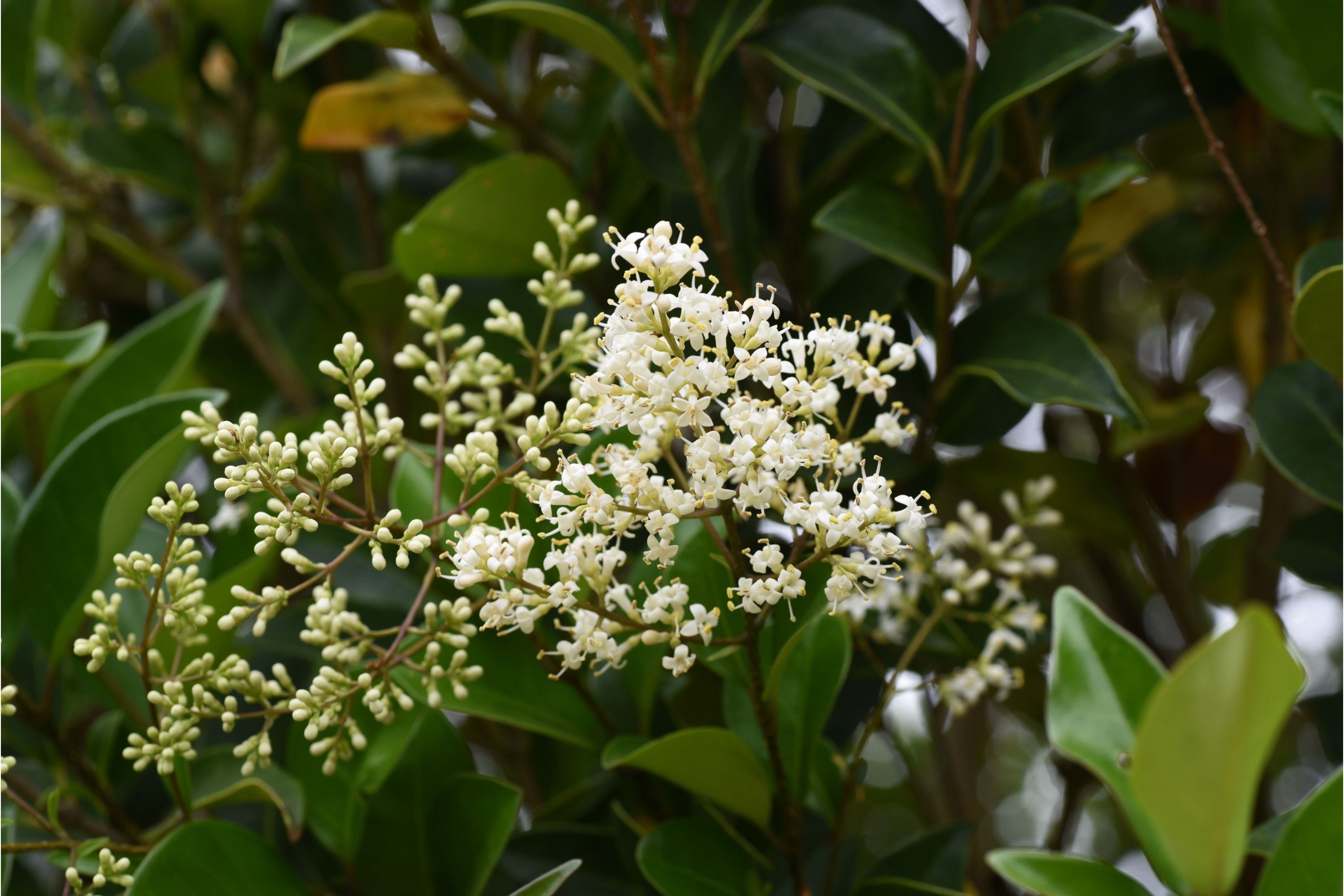Glossy privet
(Ligustrum lucidum)

Description
Ligustrum lucidum, commonly known as glossy privet, is a species of evergreen shrub or small tree belonging to the olive family (Oleaceae). It is native to China and was introduced to North America as an ornamental plant in the early 20th century. Glossy privet is widely planted as a hedge, screen, or specimen plant in gardens, parks, and along roadsides. Despite its popularity as an ornamental plant, glossy privet is considered an invasive species in some regions due to its ability to spread and displace native vegetation. Description Glossy privet can grow up to 20 feet (6 meters) tall and has a spread of 15 feet (4.6 meters) at maturity. It has a dense, rounded canopy with a moderate to fast growth rate. The leaves are dark green, glossy, and lance-shaped, measuring 2-4 inches (5-10 cm) in length and 0.4-1 inch (1-2.5 cm) in width. The leaf margins are smooth and entire, and the leaf base is rounded or slightly tapered. The leaf arrangement is opposite, and the petioles are short, measuring less than 0.2 inches (5 mm) in length. The flowers of glossy privet are small, white, and fragrant, measuring 0.2-0.3 inches (5-8 mm) in diameter. They are arranged in panicles or clusters at the ends of the branches and appear in late spring or early summer. The fruit is a small, black, round or oval drupe, measuring 0.2-0.4 inches (5-10 mm) in diameter, and contains one or two seeds. The fruit ripens in late summer or fall and persists on the plant through winter. Distribution and Habitat Glossy privet is native to China and is widely cultivated as an ornamental plant in temperate and subtropical regions worldwide. It is commonly planted as a hedge, screen, or specimen plant in gardens, parks, and along roadsides. Glossy privet is adaptable to a wide range of soil types, from sandy to clayey, and can tolerate both dry and moist conditions. It prefers full sun to partial shade and is hardy in USDA zones 7-10. Invasiveness Glossy privet is considered an invasive species in some regions, including the southeastern United States, where it has naturalized and displaces native vegetation. The plant is able to spread rapidly through vegetative reproduction via suckers or root sprouts, as well as by seed dispersal. Glossy privet is highly adaptable to different soil and environmental conditions and can outcompete native plants for resources. It is also resistant to many herbicides, making it difficult to control once established. Uses Glossy privet is widely planted as an ornamental plant for its attractive foliage, flowers, and berries. It is commonly used as a hedge, screen, or specimen plant in gardens, parks, and along roadsides. The plant is also used in traditional Chinese medicine for its diuretic, antipyretic, and antitussive properties. The leaves, roots, and bark of the plant are used in various medicinal preparations. Cultivation Glossy privet is easy to grow and maintain, making it a popular choice for gardeners and landscapers. The plant prefers full sun to partial shade and is adaptable to a wide range of soil types, from sandy to clayey. It can tolerate both dry and moist conditions, although it prefers well-drained soil. Glossy privet is hardy in USDA zones 7-10 and can be propagated by seed or cuttings.
Taxonomic tree:







